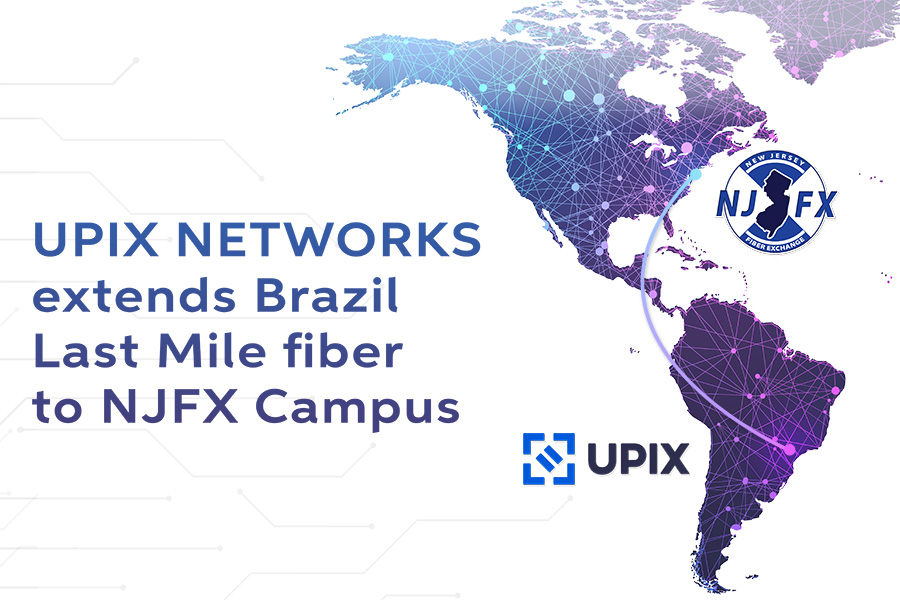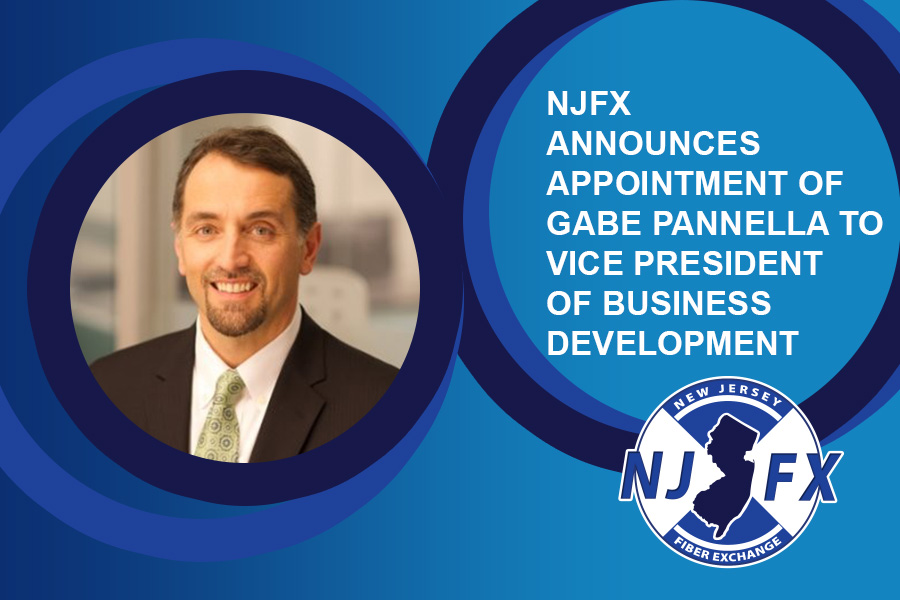Galleries
NANOG ’83
Join us in Minneapolis for NANOG 83
Incredible Programming, Network Opportunities + More
Minneapolis, MN: November 1-3, 2021
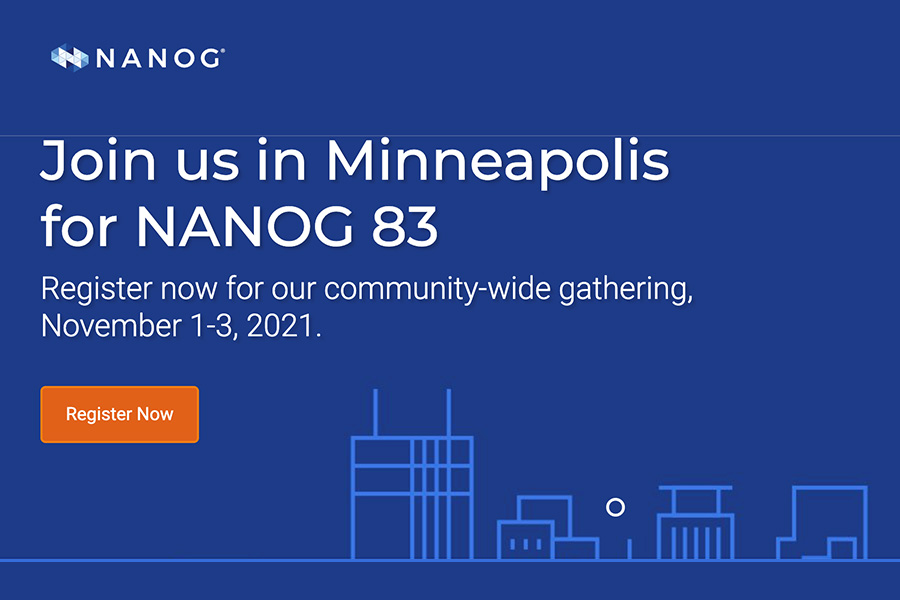
Request A Meeting With Us!
Events
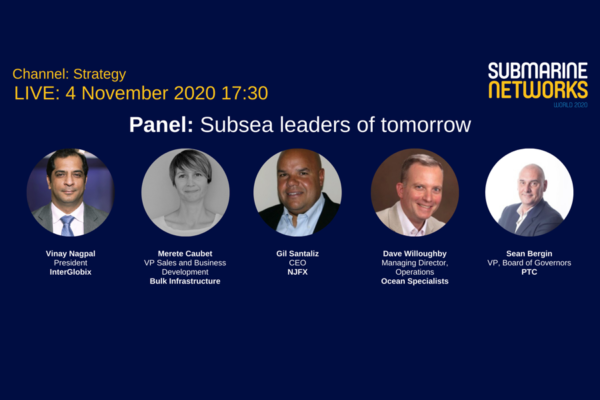
Submarine Networks World 2020
Submarine Networks 2020 Over two days, Submarine Networks World will bring you insights from live presentations, panel debates and virtual roundtables across 4 channels by leading cable
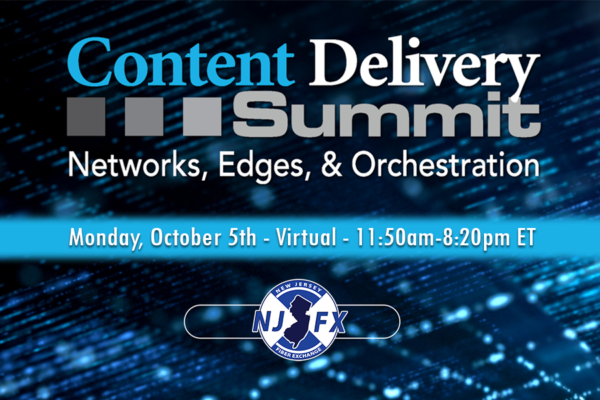
Content Delivery Summit – October 2020
Conetent Delivery Summer 2020 The Content Delivery Summit is the longest-running conference focusing on the confluence of the technology and business that enables online publishers

Capacity Europe 2020
Capacity Europe 2020 Europe’s largest event uniting the global connectivity industry will take place on the 19-22 October. Request A Meeting With Us! Events
UPIX Networks Extends Brazil Last Mile fiber to NJFX Campus
UPIX Networks Extends Brazil Last Mile fiber to NJFX Campus
One of the Largest Last Mile Network Providers in LATAM Brings High-performance Connectivity Services to Financials, Enterprises and Content Providers Across the Northeast
October 11, 2021
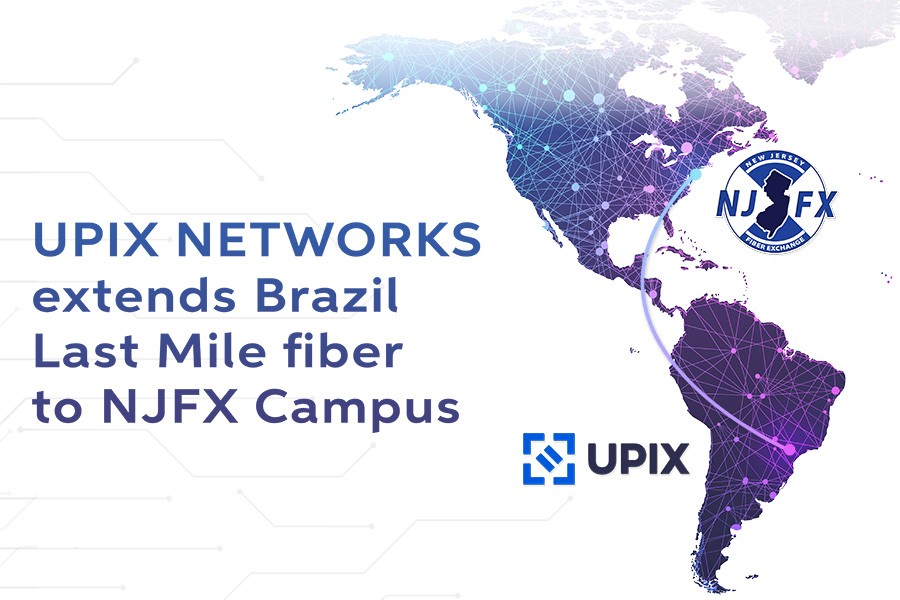
Wall Township, NJ – NJFX, the only Carrier Neutral Cable Landing Station (CLS) colocation campus in the U.S offering Tier 3 capabilities, announces UPIX Networks, a facility based provider of last mile fiber in Brazil with a platform for global connectivity network services, has extended its optical fiber network into NJFX. This brings additional high performance connectivity options for carriers and enterprises with mission-critical applications such as financial services, healthcare and OTTs.
With dual headquarters in Brazil and the United States for increased agility, UPIX has significant network resources in LATAM, including last mile capabilities throughout Brazil. This offers a distinct competitive advantage and enables expanded reach for NJFX customers. The company also offers onramps to strategic cloud partners including AWS, Oracle Cloud, Google Cloud, Microsoft Azure and Alibaba Cloud.
“When you enter a new market, it’s very important to have the right partners, and we have found a strong, collaborative partner in NJFX,” comments Daniel Oda, COO/CCO of UPIX Networks. “All the major carriers of the world are at NJFX, and so it not only serves as a strategic point of presence that strengthens our network density, but also offers our customers multiple, diverse capacity options into the New York metro area.”
UPIX offers low latency connectivity, colocation, cloud services, managed services, and field support. Its resilient global network is marked by:
- 25,000+ miles of optical fiber
- Points of presence in 10+ countries
- 400+ connected cities
- 200 connected telecom partners
- Capacity from 10Mb to 100Gb per circuit
- DWDM and Metro Ethernet network
“UPIX shares our passion for innovation, and we couldn’t be more thrilled to welcome them into our telecommunications, cloud and subsea ecosystem,” comments Felix Seda, General Manager for NJFX. “Our customers will now have access to UPIX’s end-to-end network services including point-to-point connectivity and last mile fiber throughout Brazil via the Seabras-1, Monet and AMX-1 subsea cables.”
UPIX has key network hubs in major cities including Sao Paulo, Rio de Janeiro, Fortaleza, Santiago, Miami, New York, Ashburn, Los Angeles, San Jose and Amsterdam.
NJFX hosts 80% of the major U.S. carriers across two campus Meet-Me-Rooms within its 64,800 sq. ft. facility and continues its legacy of building a unique and diverse critical infrastructure ecosystem with even more network growth ahead. Follow NJFX’s latest developments and growth on LinkedIn: https://www.linkedin.com/company/njfx/. For more information, visit www.njfx.net.
###
About NJFX:
NJFX is a Tier 3 Carrier Neutral Cable Landing Station campus. Our colocation ecosystem has expanded to over 35 network operators offering flexibility, reliability, and security. Our Wall, NJ location provides direct access to multiple subsea cable systems giving our carriers diverse connectivity solutions and offers direct interconnection without recurring cross-connect fees.
More In the News

NJFX CEO: “The Revolution Continues”
NJFX CEO: “The Revolution Continues” See the original article here at SubCable World March 8, 2018 Editor’s Note: I recently had the opportunity to interview Gil
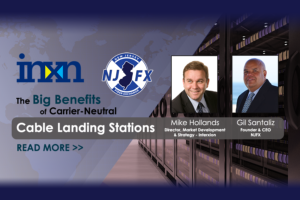
The Big Benefits of Carrier-Neutral Cable Landing Stations
The Big Benefits of Carrier-Neutral Cable Landing Stations Gil Santaliz, Founder and CEO of NJFX and Mike Hollands, Director, Market Development & Strategy at Interxion
Why subsea cables are crucial for our connected future
Why subsea cables are crucial for our connected future Subsea infrastructure is only going to increase in importance as demand continues to leap. See the
NJFX’s CEO Gil Santaliz to Speak on a Keynote Panel at Submarine Networks World Europe Conference
NJFX’s CEO Gil Santaliz to Speak on a Keynote Panel at Submarine Networks World Europe Conference Ryan Imkemeier Explains the Importance of Equipment Maintenance, Vendor
NJFX’s CEO Gil Santaliz to Speak at Metro Connect 2018
NJFX’s CEO Gil Santaliz to Speak at Metro Connect 2018 January 16, 2018 WALL, NJ – January 16, 2018 – NJFX, the first and only colocation campus
Aqua Comms Continues Investment in Subsea Cables and Announces North Atlantic Bridge
Aqua Comms Continues Investment in Subsea Cables and Announces North Atlantic Bridge January 15, 2018 DUBLIN – Aqua Comms DAC (“Aqua Comms”), the operator of Ireland’s first
UPIX Networks Extends Brazil Last Mile fiber to NJFX Campus Read More »
50 Innovative Companies to Watch 2021
50 Innovative Companies to Watch 2021
The First and Only Carrier Neutral Cable Landing Station Colocation Campus in the United States: NJFX
“We are getting interested parties to come to our CLS campus to learn more about what we are doing here, including Telecommunications Ministries from South America.”
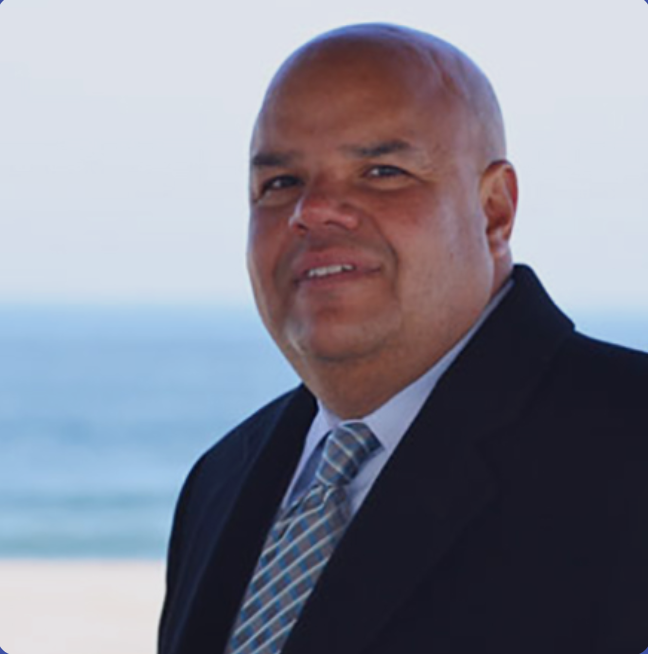
Gil Santaliz
CEO
October 1, 2021
NJFX, also known as New Jersey Fiber Exchange, is an incredibly unique Wall Township, NJ-based data center operator. NJFX owns and operates a 64,800 square foot purpose-built Tier-3 Cable Landing Station (CLS) Colocation facility and 58-acre campus in Wall, NJ. This campus is the only CLS colocation campus in the U.S supported by several route-independent carriers that offer direct access to multiple independent subsea cable systems interconnecting North America, Europe, South America, and the Caribbean.
NJFX was incorporated in 2015.
Interview Excerpt: Gil Santaliz
Q. What strategies are in place to encourage innovation in your company?
Innovation within our company is driven by competition in the marketplace and the desire to have the most cost effective solution for our customers. We are always looking to find new ways to find better total cost of ownership for our customers. We have extended the skill sets of our employees to support our customers with more technical resources, so they don’t have to hire and send their own technicians to our location. We can work as needed, including 24x7x365. We also proactively maintain all of our customers’ equipment. This makes it virtually unnecessary for our customers to send their own techs, incurring travel and lodging costs in addition to compensation. We have the skill sets and talents to do it internally, increasing uptime, allowing for upgrades, and having predictability in operations.
Q. How uniquely do you address your clients’ needs, given that NJFX offers flexibility, reliability, and security that global carriers, content providers, and enterprise or government entities utilize to drive network reliability, while reducing expenses?
At NJFX, no two installs are the same—everyone has the availability to design what makes sense for them and we support that kind of creativity. On security, we have taken steps to embrace our relationships with the FBI, the Department of Homeland Security and other state and local agencies. There is an awareness in the industry about security issues and that we must remain proactive. Because we are a country of law and order, we provide confidentiality to our customers to protect their privacy. We hire and retain employees with security clearances to support the rule of law, and support our customers’ needs with folks who can maintain confidentiality and who are trusted by our telecommunications industry.
Q. What makes your HIPAA compliant colocation campus unique?
With this certification, NJFX has achieved the highest standards required by healthcare and financial institutions today. Our highly secure facility is SSAE 16/18 Type 2 certified, and combined with our CLS security standards, places NJFX in a world-class status. By attaining HIPAA compliance certification, it allows the healthcare industry to participate in the NJFX ecosystem confidently.
Q. How does dark fiber play a role in routing between key international locations? And how secure is it?
Layer-1 dark fiber is the infrastructure of communications. Without having multiple dark fiber routes in your facility you don’t have a secure infrastructure. We are close to having over 26 fiber cables managed by various network operators. That represents the physical infrastructure for what makes global communications work. If a client has dark fiber, then they own it and can control the security of their network. A client can physically see if anyone touched or accessed that fiber system.
If a customer doesn’t have dark fiber, then that fiber is lit and managed by their telecom provider.
Q. What new endeavors is your company currently undertaking?
We’re considering expanding our staff to provide marine protection services to allow our customers to benefit from our local knowledge not only in New Jersey but the subsea industry as a whole. This way, an owner-operator can coordinate protecting their cable with agencies like the Army Corp of Engineers. One example is that recently, the Army Corp of Engineers turned to NJFX for help with a beach replenishment project. We were able to determine the right entity to contact to ensure the beach replenishment would not disturb a subsea cable. We would like to be able to serve as consultants in an official capacity with agencies and organizations such as the Army Corp of Engineers.
Q. Forming and managing innovation teams is overwhelming. That said, how do you keep your decision-makers focused?
Our guiding principles are honesty, integrity, and customer first. We keep that in mind in every interaction we undertake.
Q. Let’s talk about your team of experts and their role at NJFX. How did you form your dream squad, and how unique is it?
Employees at NJFX come with various backgrounds. On the business development side, we have been able to cultivate fresh talent. They “grew up” at NJFX learning the industry from operators and carriers, to understand this business, what’s driving the decision making and the direction of where it’s going and how to adapt our model to support those operator and carrier economics. On the operations side of the company, we hired industry veterans who have lived through every situation possible, and can use that knowledge base and expertise to support our customers. So, it is a nice balance of having a very senior Operations team and a business development team who has learned the industry and building key relationships along the way.
Q. How do you plan to transform your company into a future that is unfolding before you?
Our ultimate goal is to expand beyond New Jersey, and to make our CLS model the standard for landing subsea cables around the world. We are getting interested parties to come to our CLS campus to learn more about what we are doing here, including Telecommunications Ministries from South America. They want to emulate our model, which consists of sound infrastructure plus multiple subsea cables, terrestrial routes, with a network hub. One example is Chile is looking to become a gateway to Asia from South America. Those officials came to NJFX to see how we do it. They want to be able to have applications available at a CLS, including peering, route selection and connectivity to neighboring countries, just as we have here. The idea is to welcome subsea traffic, without hops which are points of failure, exchanging internet capacity as well as directing traffic where it needs to go.
The Leader Upfront
Gil Santaliz, Founder, serves as the Chief Executive Officer of NJFX. He helps carriers strategically diversify connectivity options to key hubs across North/South America/Europe bypassing legacy chokepoints. His innovative approach to thinking outside traditional partnerships and network architecture, led him to establish NJFX’s unique offering.
Mr. Santaliz is the visionary behind a new CLS model that has spurred unprecedented connectivity at the point where subsea and terrestrial cable systems meet. NJFX is North America’s first colocation campus that strategically intersects a carrier-neutral subsea Cable Landing Station meet-me room with an independent Tier-3 colocation facility. He was instrumental in bringing the HAVRUE/AEC-2 subsea system to NJFX, the first new subsea cable traversing the North Atlantic in two decades. The ecosystem Mr. Santaliz has developed helped carriers respond to the demand for increased bandwidth through the COVID-19 pandemic. Most recently, under his leadership, NJFX has received federal approval to become an ITU Development (ITU-D) Sector member, to help connect underserved populations to the internet. The ITU is the United Nations’ specialized agency for information and communication technologies. Notably, NJFX hosted a South American delegation to learn more about its unique CLS campus model. The delegation included Chile’s highest ranking communications official.
Previously, as founder of a metro fiber network company called 4Connections LLC, he Santaliz realized there was a lack of route diversity for carriers. He sold 4Connections to Cablevision, which is now owned by Altice.
Mr. Santaliz is a member of the Submarine Networks EMEA 2020 Advisory Board, and PTC Advisory Board. He earned a bachelor of science from Cornell University.
###
About NJFX:
NJFX is a Tier 3 Carrier Neutral Cable Landing Station campus. Our colocation ecosystem has expanded to over 35 network operators offering flexibility, reliability, and security. Our Wall, NJ location provides direct access to multiple subsea cable systems giving our carriers diverse connectivity solutions and offers direct interconnection without recurring cross-connect fees.
More In the News

NJFX CEO: “The Revolution Continues”
NJFX CEO: “The Revolution Continues” See the original article here at SubCable World March 8, 2018 Editor’s Note: I recently had the opportunity to interview Gil

The Big Benefits of Carrier-Neutral Cable Landing Stations
The Big Benefits of Carrier-Neutral Cable Landing Stations Gil Santaliz, Founder and CEO of NJFX and Mike Hollands, Director, Market Development & Strategy at Interxion
Why subsea cables are crucial for our connected future
Why subsea cables are crucial for our connected future Subsea infrastructure is only going to increase in importance as demand continues to leap. See the
NJFX’s CEO Gil Santaliz to Speak on a Keynote Panel at Submarine Networks World Europe Conference
NJFX’s CEO Gil Santaliz to Speak on a Keynote Panel at Submarine Networks World Europe Conference Ryan Imkemeier Explains the Importance of Equipment Maintenance, Vendor
NJFX’s CEO Gil Santaliz to Speak at Metro Connect 2018
NJFX’s CEO Gil Santaliz to Speak at Metro Connect 2018 January 16, 2018 WALL, NJ – January 16, 2018 – NJFX, the first and only colocation campus
Aqua Comms Continues Investment in Subsea Cables and Announces North Atlantic Bridge
Aqua Comms Continues Investment in Subsea Cables and Announces North Atlantic Bridge January 15, 2018 DUBLIN – Aqua Comms DAC (“Aqua Comms”), the operator of Ireland’s first
50 Innovative Companies to Watch 2021 Read More »
Lightpath Bolsters Presence at NJFX as part of “Landing Station Connect” Offering
Lightpath Bolsters Presence at NJFX as part of “Landing Station Connect” Offering
Lightpath uniquely use cable provider head end infrastructure to deliver diversity to NJFX customers
September 27, 2022
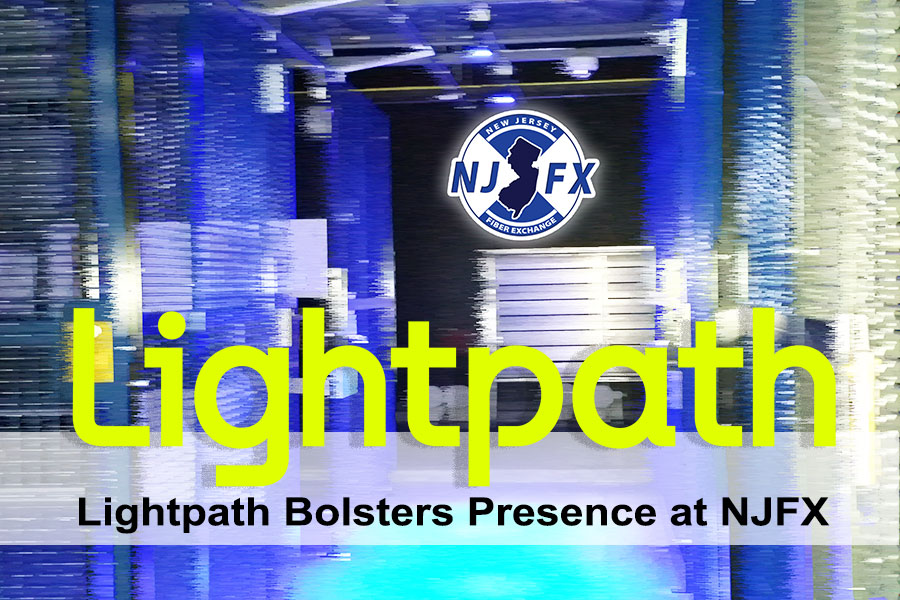
Wall Township, NJ – NJFX, the only Cable Landing Station (CLS) colocation campus in the U.S offering Tier 3, carrier-neutral data center capabilities, announces a bolstered presence for Lightpath Fiber Networks at its New Jersey facility.
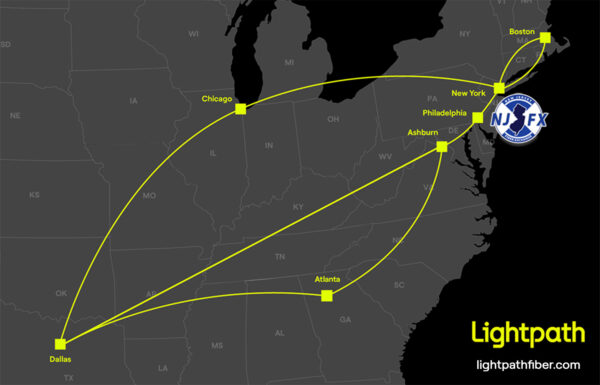 The bolstered presence at NJFX’s 64,800 square foot purpose-built facility includes dual points-of-entry, dual electronics and enhanced backhaul options. In addition, Lightpath uniquely can use cable provider head end infrastructure to deliver diversity to NJFX customers, upon request, by avoiding carrier hotels in reaching enterprise data centers in the NY/NJ/CT metro area.
The bolstered presence at NJFX’s 64,800 square foot purpose-built facility includes dual points-of-entry, dual electronics and enhanced backhaul options. In addition, Lightpath uniquely can use cable provider head end infrastructure to deliver diversity to NJFX customers, upon request, by avoiding carrier hotels in reaching enterprise data centers in the NY/NJ/CT metro area.
As a longtime NJFX partner, Lightpath has reinvented itself – from a next-generation network and services, to enhanced customer service and support, and everything in between. Lightpath is also investing in terrestrial support of subsea networks and cable landing stations through its solution, ‘Landing Station Connect’. As subsea and corresponding terrestrial transport grow to higher levels of mission criticality, choosing the right terrestrial connectivity provider becomes crucial. Lightpath landing station solutions offer customers unsurpassed connectivity options, reliability, resiliency, and security.
“The increase in subsea infrastructure has led to a much-needed increase of both bandwidth availability and services on that infrastructure,” commented Mike Ocuto, VP of Sales at Lightpath. “Cable landing stations have evolved to be more important than ever. The capacity on new subsea systems, along with the added services, need to make their way back to land. Lightpath’s all-fiber, infrastructure-based network provides our customers with customized options to buildings, data centers, and other interconnectivity facilities – over 12,000 locations on our network.”
“Networks with the breadth and depth of Lightpath see the value in a strong presence at the cable landing station,” states Gabe Pannella, Vice President of Business Development. “We are pleased to be able to offer Lightpath the global, subsea connectivity required to support its enterprise customers across its all-fiber, terrestrial network.”
Landing Station Connect is the latest step in Lightpath’s mission to innovate across the entire company, from network and technologies to customer service. Lightpath’s emphasis on personalized customer service means that every point in a customer’s journey with Lightpath is being examined and improved, with the goal of creating the best experience in the industry. Follow Lightpath on LinkedIn and Twitter, and visit www.lightpathfiber.com.
NJFX continues to drive innovation and help its carriers and subsea provider clients build their networks with maximum diversity at both the terrestrial and subsea level, avoiding traditional bottlenecks and highly congested areas such as NYC metro and Miami. The company proudly just celebrated its fifth anniversary with its robust ecosystem of partners, carriers, and customers. For more information, visit www.njfx.net.
###
About NJFX:
NJFX is a Tier 3 Carrier Neutral Cable Landing Station campus. Our colocation ecosystem has expanded to over 35 network operators offering flexibility, reliability, and security. Our Wall, NJ location provides direct access to multiple subsea cable systems giving our carriers diverse connectivity solutions and offers direct interconnection without recurring cross-connect fees.
More In the News

NJFX CEO: “The Revolution Continues”
NJFX CEO: “The Revolution Continues” See the original article here at SubCable World March 8, 2018 Editor’s Note: I recently had the opportunity to interview Gil

The Big Benefits of Carrier-Neutral Cable Landing Stations
The Big Benefits of Carrier-Neutral Cable Landing Stations Gil Santaliz, Founder and CEO of NJFX and Mike Hollands, Director, Market Development & Strategy at Interxion
Why subsea cables are crucial for our connected future
Why subsea cables are crucial for our connected future Subsea infrastructure is only going to increase in importance as demand continues to leap. See the
NJFX’s CEO Gil Santaliz to Speak on a Keynote Panel at Submarine Networks World Europe Conference
NJFX’s CEO Gil Santaliz to Speak on a Keynote Panel at Submarine Networks World Europe Conference Ryan Imkemeier Explains the Importance of Equipment Maintenance, Vendor
NJFX’s CEO Gil Santaliz to Speak at Metro Connect 2018
NJFX’s CEO Gil Santaliz to Speak at Metro Connect 2018 January 16, 2018 WALL, NJ – January 16, 2018 – NJFX, the first and only colocation campus
Aqua Comms Continues Investment in Subsea Cables and Announces North Atlantic Bridge
Aqua Comms Continues Investment in Subsea Cables and Announces North Atlantic Bridge January 15, 2018 DUBLIN – Aqua Comms DAC (“Aqua Comms”), the operator of Ireland’s first
Lightpath Bolsters Presence at NJFX as part of “Landing Station Connect” Offering Read More »
NJFX Hits Five Year Milestone, Secures Itself as Vibrant and Crucial Interconnection Hub for the western Hemisphere
NJFX Hits Five Year Milestone, Secures Itself as Vibrant and Crucial Interconnection Hub for the western Hemisphere
NJFX continues to drive innovation and help its carriers and subsea provider clients build their networks with maximum diversity at both the terrestrial and subsea leve

Gil Santaliz
CEO
September 20, 2021

Wall Township, NJ – NJFX, the only Cable Landing Station (CLS) colocation campus in the U.S offering Tier 3, carrier-neutral data center capabilities, has reached a major milestone: the five year anniversary of the opening of its facility.
NJFX has experienced unprecedented growth since its 2016 grand opening, securing its position as a major hub of connectivity for the Western Hemisphere and beyond. NJFX is the only Cable Landing Station (CLS) colocation campus in the U.S offering Tier 3 carrier-neutral data center capabilities. Positioned at the eastern edge of North America, NJFX’s 64,800 square foot facility is strategically located 64 ft above sea level in a Category-5 hurricane-resistant building.
The CLS/colocation campus provides direct access to four subsea cable systems, bypassing New York City and Miami, interconnecting North America, South America, Europe and the Caribbean. The facility hosts 80% of major U.S. carriers – more than 25 in total. Additional connectivity options via two campus Meet-Me-Rooms means the NJFX ecosystem is low-latency, highly resilient and, fully redundant, with direct interconnection options for service providers, enterprises, carrier-neutral operators and cable companies.
NJFX Founder and CEO Gil Santaliz had the vision to create connectivity in a neutral environment at the cable landing station where competition could be fostered to benefit customers and collaboration could occur to increase connectivity and diversity for all. That vision has not only been realized, it’s being emulated.
“NJFX is smashing the model of what a CLS is – which is no longer a passive location serving a singular purpose. Getting away from the idea that it’s just a landing point that provides connection to a faraway hub for carriers, NJFX serves as a landing point that is the hub itself,” comments Santaliz. “This is being noticed by others as they plan landing stations around the world,” added Santaliz.
A delegation of officials from the South American countries of Chile and Ecuador visited the campus in early 2020 to learn more about achieving an optimal model of interconnection for future projects. Delegation member Natalia López is the Head of the Telecommunications Development Fund Division for the government of Chile, working to drive initiatives to improve Chile’s telecommunications infrastructure.
“We learned a lot about considerations for power, backup power, location and more,” stated López. “We found our tour of the NJFX facility enlightening and fascinating. It’s truly a unique campus with access to several subsea and terrestrial routes.”
Joe Scattareggia EVP, Wholesale, Windstream Wholesale, agrees, adding: “What used to be a passthrough today is an ecosystem. You’ve got cables landing, cloud services, carriers providing backhaul and internet provider presence. We look at these partnerships, what opportunities best offer us potential to sell our services.”
The most recent cable system terminating at the NJFXL CLS is AEC-2. “NJFX was chosen for its location, well above any tidal or weather-induced storm surges, for the safety and security of the landing. Also, for its position on key interconnection routes and for its ecosystems of interconnection partners, who can carry traffic from here across the length and breadth of the USl, avoiding more traditional pinch points in lower Manhattan,” states Nigel Bayliff, CEO, Aqua Comms.
Telia Carrier chose NJFX as a site for its terabit scale Point-of-Presence “We designed our architecture at NJFX to support high capacity and huge demand ahead for expanded network reach and resiliency,” said Staffan Göjeryd, CEO, Telia Carrier. “At the NJFX CLS, we offer maximum flexibility and extensions into the rest of the Telia Carrier global network and tie it into the recently announced expansion of the East Coast corridor where we added two new routes between New Jersey and Northern Virginia.”
“We were all big fans of NJFX right from the start and had faith that NJFX would build a unique and impactful CLS ecosystem. The investment we made at their CLS campus has really paid off.” stated Thomas Schemly, Executive Director, Telecom Solutions for ZenFi Networks “We’ve seen tremendous growth stem from our point of presence at NJFX. Their team has been a great partner for ZenFi as our services complement each other, and as such we are seeing a lot of new business coming out of NJFX,” continued Schemly.
NJFX continues to drive innovation and help its carriers and subsea provider clients build their networks with maximum diversity at both the terrestrial and subsea level, avoiding traditional bottlenecks and highly congested areas such as NYC metro and Miami. The company is proud to celebrate its fifth anniversary with its robust ecosystem of partners, carriers, and customers. For more information, visit www.njfx.net.
###
About NJFX:
NJFX is a Tier 3 Carrier Neutral Cable Landing Station campus. Our colocation ecosystem has expanded to over 35 network operators offering flexibility, reliability, and security. Our Wall, NJ location provides direct access to multiple subsea cable systems giving our carriers diverse connectivity solutions and offers direct interconnection without recurring cross-connect fees.
More In the News

NJFX CEO: “The Revolution Continues”
NJFX CEO: “The Revolution Continues” See the original article here at SubCable World March 8, 2018 Editor’s Note: I recently had the opportunity to interview Gil

The Big Benefits of Carrier-Neutral Cable Landing Stations
The Big Benefits of Carrier-Neutral Cable Landing Stations Gil Santaliz, Founder and CEO of NJFX and Mike Hollands, Director, Market Development & Strategy at Interxion
Why subsea cables are crucial for our connected future
Why subsea cables are crucial for our connected future Subsea infrastructure is only going to increase in importance as demand continues to leap. See the
NJFX’s CEO Gil Santaliz to Speak on a Keynote Panel at Submarine Networks World Europe Conference
NJFX’s CEO Gil Santaliz to Speak on a Keynote Panel at Submarine Networks World Europe Conference Ryan Imkemeier Explains the Importance of Equipment Maintenance, Vendor
NJFX’s CEO Gil Santaliz to Speak at Metro Connect 2018
NJFX’s CEO Gil Santaliz to Speak at Metro Connect 2018 January 16, 2018 WALL, NJ – January 16, 2018 – NJFX, the first and only colocation campus
Aqua Comms Continues Investment in Subsea Cables and Announces North Atlantic Bridge
Aqua Comms Continues Investment in Subsea Cables and Announces North Atlantic Bridge January 15, 2018 DUBLIN – Aqua Comms DAC (“Aqua Comms”), the operator of Ireland’s first
Meeting Global Connectivity Expectations and Bridging the Digital Divide
Meeting Global Connectivity Expectations and Bridging the Digital Divide
Gil Santaliz Weighs in On the Energy, Submarine, Fiber Carrier Interconnect Panel at 14th Content Delivery Summit Conference

Gil Santaliz
CEO
September 7, 2022

With 19% of the planet still not having access to telecommunications networks because of location, connectivity is not globally distributed. Subsea and underwater cabling is the only way to ensure connectivity over a long distance across land and sea.
Bridging the Digital Divide was one of many issues discussed during the Energy, Submarine, Fiber Carrier Interconnect Panel at the Content Delivery Summit conference. This thought-provoking panel discussed the real-world availability of fundamental infrastructure services that underpin all CDN operations, and the complexities to consider when deploying POPs around the world. Gil Santaliz, CEO of NJFX, was a core player on the panel and was joined by
Andy Bax, COO, Seaborn Networks and Elsa Pine, Global Sales – Emerging Technologies, Edge Infrastructure for EdgeConneX. The panel was moderated by Dom Robinson, Director and Creative Firestarter, id3as and Contributing Editor, StreamingMedia.com, UK.
“The world is vast, but has gotten a lot smaller because of the strength of today’s underwater cabling systems,” commented Santaliz. Gil would know. NJFX helps carriers strategically diversify connectivity options to key hubs across North America, Europe, and South America, bypassing legacy chokepoints. The world’s first colocation campus that strategically intersects a carrier-neutral subsea Cable Landing Station meet-me room with an independent Tier 3 colocation facility, NJFX is also a member of International Development Telecommunications Union Development Sector (ITU-D), which aims to work with governments to bring internet access to 75% of the global population by 2025 and universal, affordable access by 2030.
Everyone on the panel agreed that all of these goals are lofty, and that collaboration amongst the entire industry is necessary to meet them. COVID-19 has escalated expectations for the entire telecommunications industry and changed the world as we know it. People now need real-time access to not only content but life-altering commodities such as education and healthcare. The challenge is bridging the gap between where we are today and where we need to be.
Be sure to watch this thought-provoking panel in its entirety to learn how NJFX is working with others and leading the way in building infrastructure for a technology-enabled tomorrow.
You can check out the full video here: https://www.youtube.com/watch?v=dJRTy4-WEZo
###
About NJFX:
NJFX is a Tier 3 Carrier Neutral Cable Landing Station campus. Our colocation ecosystem has expanded to over 35 network operators offering flexibility, reliability, and security. Our Wall, NJ location provides direct access to multiple subsea cable systems giving our carriers diverse connectivity solutions and offers direct interconnection without recurring cross-connect fees.
More In the News

NJFX CEO: “The Revolution Continues”
NJFX CEO: “The Revolution Continues” See the original article here at SubCable World March 8, 2018 Editor’s Note: I recently had the opportunity to interview Gil

The Big Benefits of Carrier-Neutral Cable Landing Stations
The Big Benefits of Carrier-Neutral Cable Landing Stations Gil Santaliz, Founder and CEO of NJFX and Mike Hollands, Director, Market Development & Strategy at Interxion
Why subsea cables are crucial for our connected future
Why subsea cables are crucial for our connected future Subsea infrastructure is only going to increase in importance as demand continues to leap. See the
NJFX’s CEO Gil Santaliz to Speak on a Keynote Panel at Submarine Networks World Europe Conference
NJFX’s CEO Gil Santaliz to Speak on a Keynote Panel at Submarine Networks World Europe Conference Ryan Imkemeier Explains the Importance of Equipment Maintenance, Vendor
NJFX’s CEO Gil Santaliz to Speak at Metro Connect 2018
NJFX’s CEO Gil Santaliz to Speak at Metro Connect 2018 January 16, 2018 WALL, NJ – January 16, 2018 – NJFX, the first and only colocation campus
Aqua Comms Continues Investment in Subsea Cables and Announces North Atlantic Bridge
Aqua Comms Continues Investment in Subsea Cables and Announces North Atlantic Bridge January 15, 2018 DUBLIN – Aqua Comms DAC (“Aqua Comms”), the operator of Ireland’s first
Meeting Global Connectivity Expectations and Bridging the Digital Divide Read More »
What is a submarine cable? Subsea fiber explained
What is a submarine cable? Subsea fiber explained
Our wireless world depends on a few hundred fiber cables laid on the ocean floor
Original article posted at DataCenterDynamics.com
by Dan Swinhoe
August 31, 2021
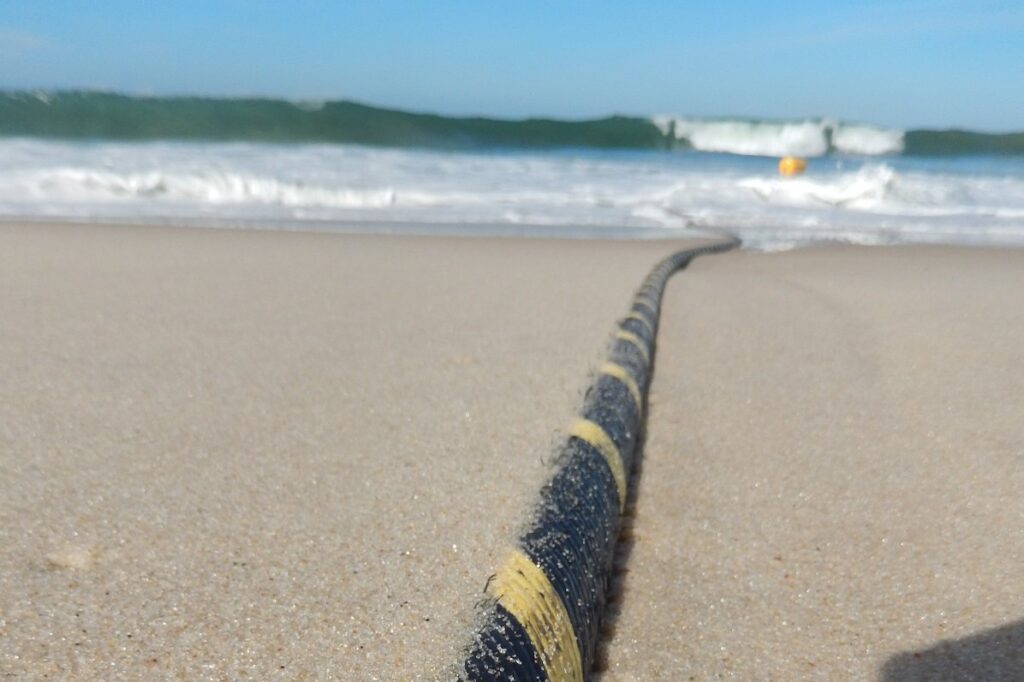
Though we live in an increasingly wireless world, that connectivity depends on wires under the ocean.
Subsea or submarine cables are fiber optic cables that connect countries across the world via cables laid on the ocean floor. These cables – often thousands of miles in length – are able to transmit huge amounts of data rapidly from one point to another.
What is a submarine cable?
A submarine cable is a fiber optic cable laid in the ocean, connecting two or more landing points.Rarely much wider than a garden hose, today cables generally comprise of the optical fibers that carry the information, which are then covered in silicon gel, then sheathed in varying layers of plastic, steel wiring, copper, and nylon in order to provide insulation to protect the signal and protect the cable from damage from wildlife, anchors & fishing, or weather & other natural events.
The cables are laid using ships that are modified specifically for this purpose, transporting and slowly laying the ‘wet plant’ infrastructure on the seabed. These special ships can carry thousands of kilometers of optical cable out to sea. A special subsea plow is also used to trough and bury submarine cables along the seabed closer to shorelines where naval activities, such as anchoring and fishing, are most prevalent and could damage submarine cables.
“We’ve had submarine cables for over 150 years,” explains Gil Santaliz, founder and CEO of New Jersey cable landing station NJFX, “and they’ve really been a way for communication between countries and continents.”“The most basic application is communicating what’s happening in one part of the world to another, but we’ve morphed that to allow applications to exist in multiple countries at the same time, to enhance the performance of applications, and to find eco-friendly locations where you can run applications with a zero-carbon footprint yet enjoy the application the country where they don’t have that resource.”
Subsea cables; connecting the world for 170 years
Work to demonstrate the potential of subsea cables began in the 1840s, when Samuel Morse, the inventor of Morse Code, submerged a wire insulated with tarred hemp and India rubber, in the water of New York Harbor and telegraphed through it in 1842.The first commercial cable was laid in 1850, when the English Channel Submarine Telegraph Company laid a telegraph cable between England and France. It was cut weeks later by fishermen thinking it was seaweed.
A successor company, the Submarine Telegraph Company, laid a second cable the next year and more cables linking the British Isles to mainland Europe followed.In 1854 and completed in 1858, the Transatlantic telegraph cable – which ran from Valentia in western Ireland to Bay of Bulls, Trinity Bay, Newfoundland and was the first to traverse the Atlantic – was laid by the Atlantic Telegraph Company. It only functioned for only three weeks before breaking beyond repair.
The first official telegram to pass between two continents – at a rate of a single character every two minutes – was a letter of congratulations from Queen Victoria of the United Kingdom to President of the United States James Buchanan on August 16. Following progressive signal deterioration, the cable was destroyed after excessive voltage was applied to try and boost the transmission strength. While it was only in operation for a short time, it showed intercontinental communication was possible and a second cable was laid in 1865.The first trans-Pacific cables were completed in 1902 and 1903, linking the US mainland to Hawaii in 1902 and Guam to the Philippines in 1903.The first subsea telephone cable, TAT-1, was laid between 1955 and 1956.
A joint project between the UK Post Office (of which BT was part for a number of years), the American Telephone and Telegraph company (now AT&T), and the Canadian Overseas Telecommunications Corporation, it was able to carry 35 simultaneous telephone calls.The eighth transatlantic communications cable, TAT-8, was the first fiber optic subsea cable. Constructed in 1988 by a consortium of companies led by AT&T, France Télécom, and British Telecom, the cable was able to carry 280 Mbits per second. It was retired in 2002.Today there are more than 400 subsea cables in operation.
Some connecting nearby islands can be shorter than 50 miles long. Others, traversing the pacific, can reach more than 10,000 miles in length. Some connect singles points across a body of water, others have multiple landing points connecting multiple countries.Antarctica is the only continent not yet reached by a submarine telecommunications cable, though one is reportedly being considered to improve connectivity for researchers in the region.Cable technology evolves quicklyAfter choosing the desired route…
Read the complete article here.###
NJFX is a Tier 3 Carrier Neutral Cable Landing Station campus. Our colocation ecosystem has expanded to over 35 network operators offering flexibility, reliability, and security. Our Wall, NJ location provides direct access to multiple subsea cable systems giving our carriers diverse connectivity solutions and offers direct interconnection without recurring cross-connect fees.
More In the News

NJFX CEO: “The Revolution Continues”
NJFX CEO: “The Revolution Continues” See the original article here at SubCable World March 8, 2018 Editor’s Note: I recently had the opportunity to interview Gil

The Big Benefits of Carrier-Neutral Cable Landing Stations
The Big Benefits of Carrier-Neutral Cable Landing Stations Gil Santaliz, Founder and CEO of NJFX and Mike Hollands, Director, Market Development & Strategy at Interxion
Why subsea cables are crucial for our connected future
Why subsea cables are crucial for our connected future Subsea infrastructure is only going to increase in importance as demand continues to leap. See the
NJFX’s CEO Gil Santaliz to Speak on a Keynote Panel at Submarine Networks World Europe Conference
NJFX’s CEO Gil Santaliz to Speak on a Keynote Panel at Submarine Networks World Europe Conference Ryan Imkemeier Explains the Importance of Equipment Maintenance, Vendor
NJFX’s CEO Gil Santaliz to Speak at Metro Connect 2018
NJFX’s CEO Gil Santaliz to Speak at Metro Connect 2018 January 16, 2018 WALL, NJ – January 16, 2018 – NJFX, the first and only colocation campus
Aqua Comms Continues Investment in Subsea Cables and Announces North Atlantic Bridge
Aqua Comms Continues Investment in Subsea Cables and Announces North Atlantic Bridge January 15, 2018 DUBLIN – Aqua Comms DAC (“Aqua Comms”), the operator of Ireland’s first
What is a submarine cable? Subsea fiber explained Read More »
NJFX Hosts Briefing with Federal, State and Local Law Enforcement Partners on Strengthening Data Centers and Cable Landing Stations
NJFX Hosts Briefing with Federal, State and Local Law Enforcement Partners on Strengthening Data Centers and Cable Landing Stations
Securing National IT Infrastructure Requires Public/Private Partnership
August 30, 2022
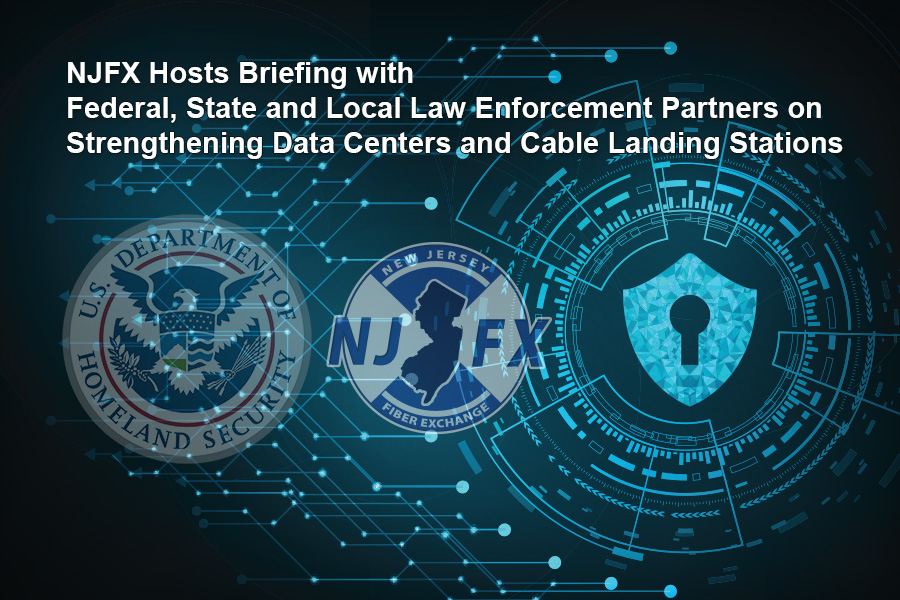
Wall Township, NJ – NJFX, the only Cable Landing Station (CLS) colocation campus in the U.S offering Tier 3, carrier-neutral data center capabilities, has announced a partnership with the Department of Homeland Security’s Cybersecurity and Infrastructure Security Agency (CISA) to protect against and prevent cyber and physical threats in the future.
NJFX Site Access Manager, Mike Reverendo, is in direct and consistent communication with the Department of Homeland Security (DHS) and CISA to help provide crucial information about U.S. infrastructure. Recently, Reverendo and his team of interns utilized a tool offered by DHS to proactively evaluate NJFX compared to other critical infrastructure throughout the nation. Michael Beekman and Tiffany Antonelli, both in the Criminal Justice Master’s Program at Monmouth University, presented a detailed assessment to officials from local, state and federal government. This briefing assists these agencies with the key tools they need to assess readiness of organizations across the country – for example a process to review a facility’s power, cooling and core functions and how that facility can continue to operate if any or all of these functions fail. The presentation turned into a collaborative discussion with state and local law enforcement about how to proceed and further work together in the future.
“We got some great feedback from this briefing. The simple fact that NJFX was willing to coordinate and cooperate with officials was very much appreciated,” comments Reverendo.
“There are few organizations that work with DHS at federal level, out of a hesitancy that they will open themselves up to regulation, changes to protocol or even be forced to give up control. But this is not a ‘gotcha’ attempt by these agencies. They are looking for assistance and input from those of us in the industry who can help them where they need guidance.”
DHS was created after America was targeted by terrorists as an agency to secure the U.S. from attacks by “land, air or sea”. Today, the Department is also engaged in protecting our country from attacks via cyberspace. The CISA division of DHS works actively to assess threats and vulnerabilities in our nation’s IT infrastructure, whether they are manmade or natural disasters.
One of the goals of CISA is to defend against threats to our infrastructure and to collaborate with public and private partners to build more secure and resilient infrastructure to protect against and prevent cyber and physical threats in the future. To achieve that goal, CISA partners with private organizations like NJFX.
Recent examples of what can happen when that infrastructure is not protected include the ransomware attack on Colonial Pipeline in April, followed by the biggest ransom demand to date – $50M – against Acer computers in May. These attacks made headlines. According to the University of Maryland, hackers attack every 39 seconds. That is an average of 2,244 attacks EVERY DAY. Those are cyber events. An explosion in downtown Nashville last Christmas significantly damaged an AT&T building, causing widespread regional outages.
DHS also helps protect critical infrastructure from natural disasters, like hurricanes. As peak Atlantic hurricane season looms, NJFX is secure 64-feet above sea level and outside the NY/NJ metro area, making it impervious to tidal surge and ideal for disaster recovery. In addition, NJFX is a CAT-5 hurricane resistant infrastructure with onsite generators with fuel for up to five days of uninterrupted emergency service. DHS works with facilities like NJFX to make sure telecommunications infrastructure is up and running in times of emergency, which is crucial for public safety communications.
“We value our relationships with these agencies, and we know it’s through close collaboration with all types of organizations that they can ultimately stay one step ahead of those who want to do harm,” concludes Reverendo. Expect the unexpected is a motto that the NJFX was founded upon, and the facility continues to operate with that in mind today.
###
About NJFX:
NJFX is a Tier 3 Carrier Neutral Cable Landing Station campus. Our colocation ecosystem has expanded to over 35 network operators offering flexibility, reliability, and security. Our Wall, NJ location provides direct access to multiple subsea cable systems giving our carriers diverse connectivity solutions and offers direct interconnection without recurring cross-connect fees.
More In the News

NJFX CEO: “The Revolution Continues”
NJFX CEO: “The Revolution Continues” See the original article here at SubCable World March 8, 2018 Editor’s Note: I recently had the opportunity to interview Gil

The Big Benefits of Carrier-Neutral Cable Landing Stations
The Big Benefits of Carrier-Neutral Cable Landing Stations Gil Santaliz, Founder and CEO of NJFX and Mike Hollands, Director, Market Development & Strategy at Interxion
Why subsea cables are crucial for our connected future
Why subsea cables are crucial for our connected future Subsea infrastructure is only going to increase in importance as demand continues to leap. See the
NJFX’s CEO Gil Santaliz to Speak on a Keynote Panel at Submarine Networks World Europe Conference
NJFX’s CEO Gil Santaliz to Speak on a Keynote Panel at Submarine Networks World Europe Conference Ryan Imkemeier Explains the Importance of Equipment Maintenance, Vendor
NJFX’s CEO Gil Santaliz to Speak at Metro Connect 2018
NJFX’s CEO Gil Santaliz to Speak at Metro Connect 2018 January 16, 2018 WALL, NJ – January 16, 2018 – NJFX, the first and only colocation campus
Aqua Comms Continues Investment in Subsea Cables and Announces North Atlantic Bridge
Aqua Comms Continues Investment in Subsea Cables and Announces North Atlantic Bridge January 15, 2018 DUBLIN – Aqua Comms DAC (“Aqua Comms”), the operator of Ireland’s first
NJFX Announces Appointment of Gabe Pannella to Vice President of Business Development
September 24, Wall Twp., NJ – NJFX, the only Cable Landing Station (CLS) colocation campus in the U.S offering Tier 3, carrier-neutral data center capabilities, welcomes Gabe Pannella as Vice President of Business Development. In this position, Pannella will build upon the success of NJFX’s robust ecosystem of 25 carriers and four subsea cable systems to develop relationships with enterprise businesses.
Pannella first played a leadership role during his tenure at Metromedia Fiber Networks in the late ‘90s. He then joined Abovenet after the company reorganized, and he spent more than a decade bringing his expertise and knowledge about network architecture to executives at dozens of the country’s top 100 financial institutions. Pannella’s strong business development background with top names in the connectivity industry including Lightower, Zayo, Zenfi Networks, and data center industry expertise with companies such as Digital Realty, Cyxtera, and CoreSite that make him the ideal candidate.
“Gabe brings a wealth of experience and will further our goal of servicing the enterprise market. NJFX creates a level of transparency by educating the enterprise market on carrier network architecture and illustrates why it’s crucial to have reliable, resilient, and redundant routes for their business,” comments Gil Santaliz, Founder and CEO of NJFX. “NJFX enables dark fiber network access on subsea cables. Customers can create and maintain their own private optical networks bypassing carrier hotels and eliminating unnecessary points of failure.”
NJFX not only has colocation services; its large and diverse ecosystem offers customers access to a wide variety of domestic, international carriers and internet exchanges.
“I am looking forward to bringing the story of this vibrant and trusted NJFX ecosystem to prospective enterprise customers,” states Pannella. “As more and more businesses realize the importance of well-architected networks, they will require access to multiple routes to serve their customers.”
Over the last 25 years, Pannella has played roles that range from interconnection to data center colocation, thus providing a thorough understanding of how both industries operate. During Hurricane Sandy, Pannella played an essential role with his mission-critical customers to maintain available connectivity options in the New York metro area.
The pandemic has highlighted the growing significance of residential IP networks as no longer for entertainment purposes only. NJFX has taken the lead in making those networks available today bypassing the public internet. The surge in digital services usage places tremendous pressure on the internet to further handle the rise in traffic volumes and shifting patterns of demand that can potentially affect the end-user experience.
Pannella will be joining the NJFX team at International Telecoms Week (ITW) 2021, taking place August 29th through September 1st at National Harbor, MD along with an available virtual option. Register now to sit in on the Subsea Connect Panel, on which Gil Santaliz will share his expertise.
For more information, visit www.njfx.net.
About NJFX
NJFX owns and operates a 64,800 square foot purpose-built Tier 3 Cable Landing Station (CLS) Colocation facility and campus in Wall, NJ. The unique facility operationally supports high and low-density colocation solutions with 24/7 support. It is the only carrier-neutral CLS colocation campus in the U.S supported by several route-independent carriers that offer direct access to multiple independent subsea cable systems interconnecting North America, Europe, South America and the Caribbean. The facility offers direct access to the Havfrue/AEC2, Seabras, TGN1 & TGN2 subsea cable systems.
For NJFX media inquiries, please contact: [email protected]
NJFX Announces Appointment of Gabe Pannella to Vice President of Business Development Read More »


